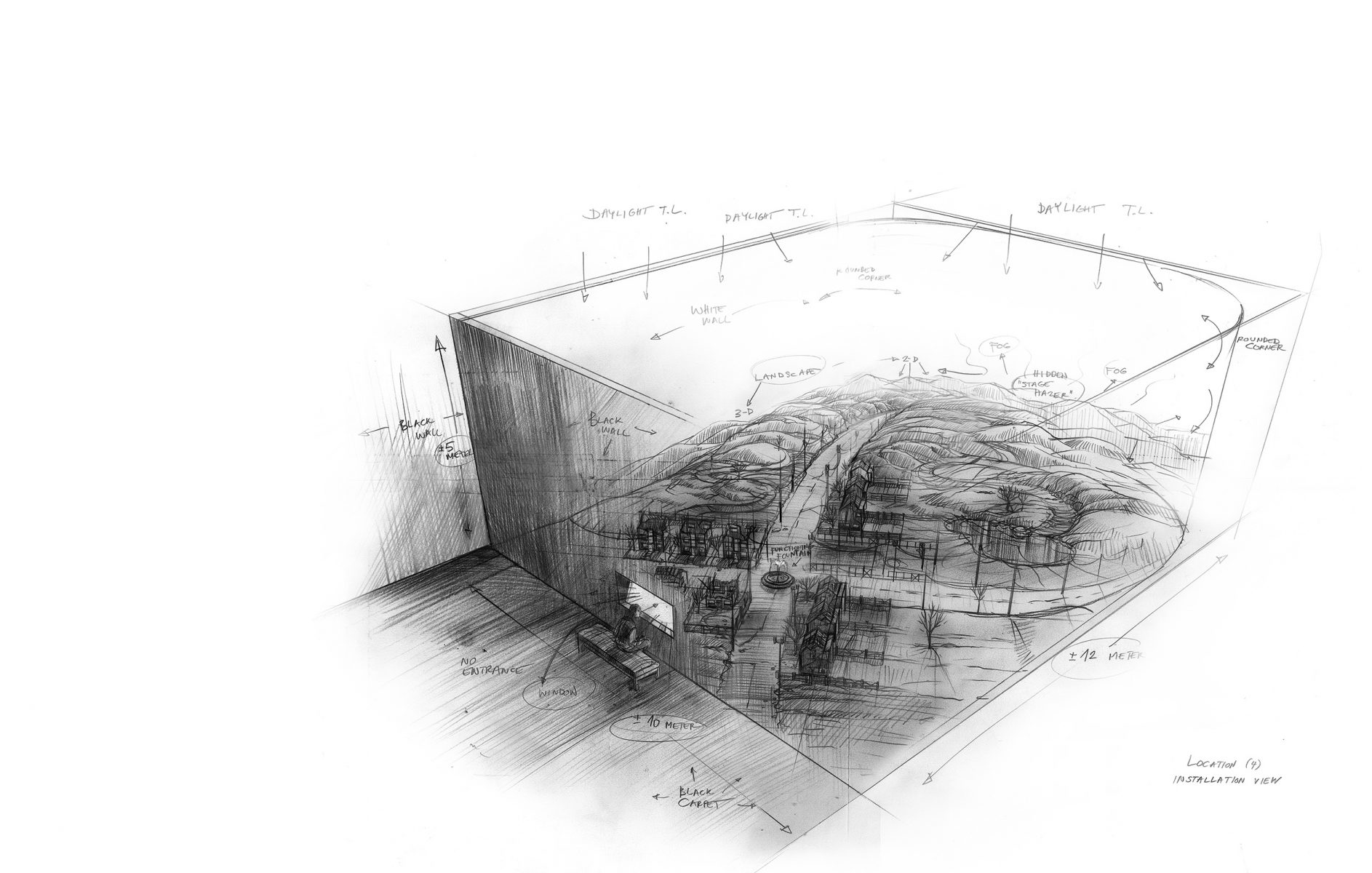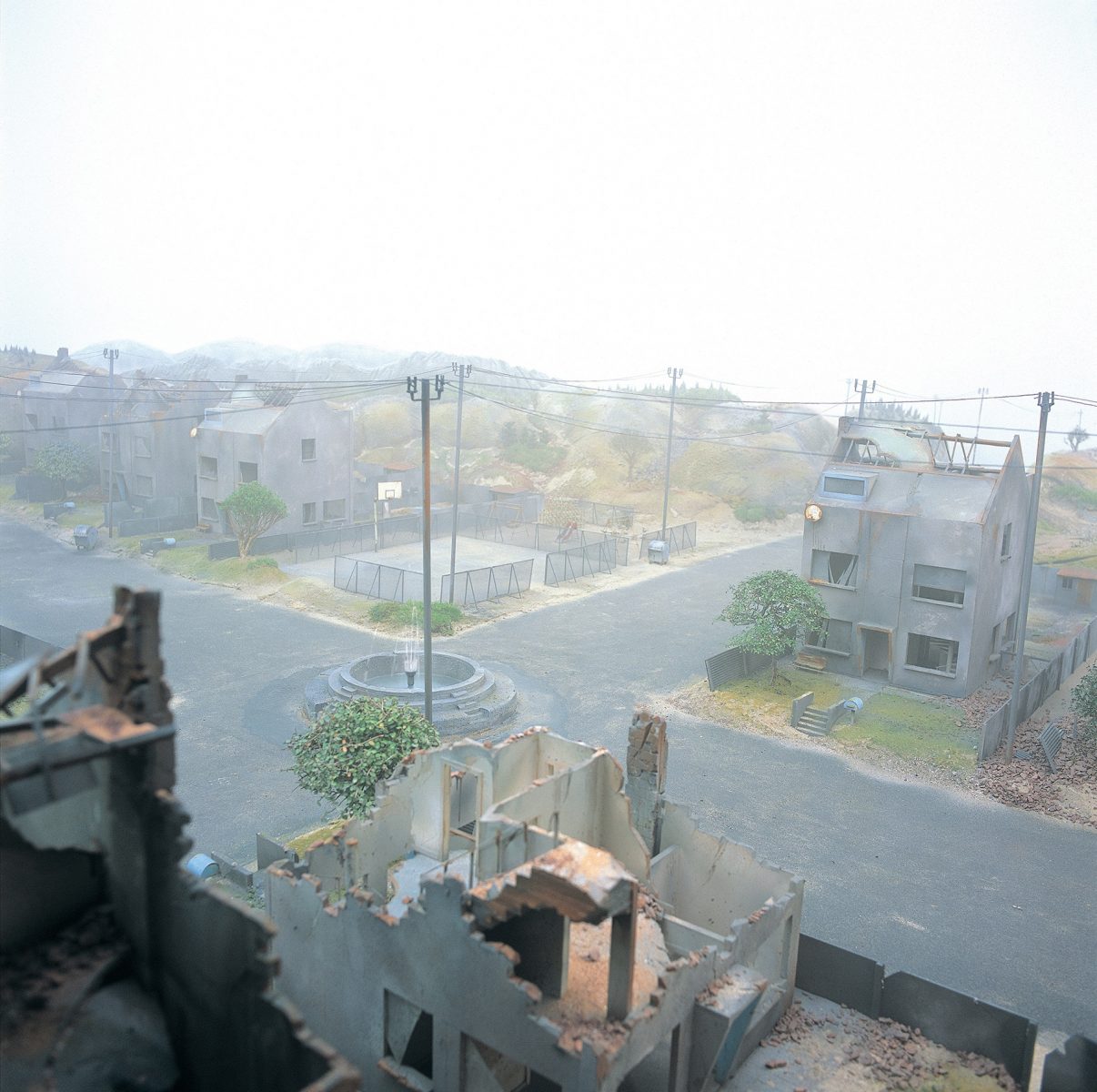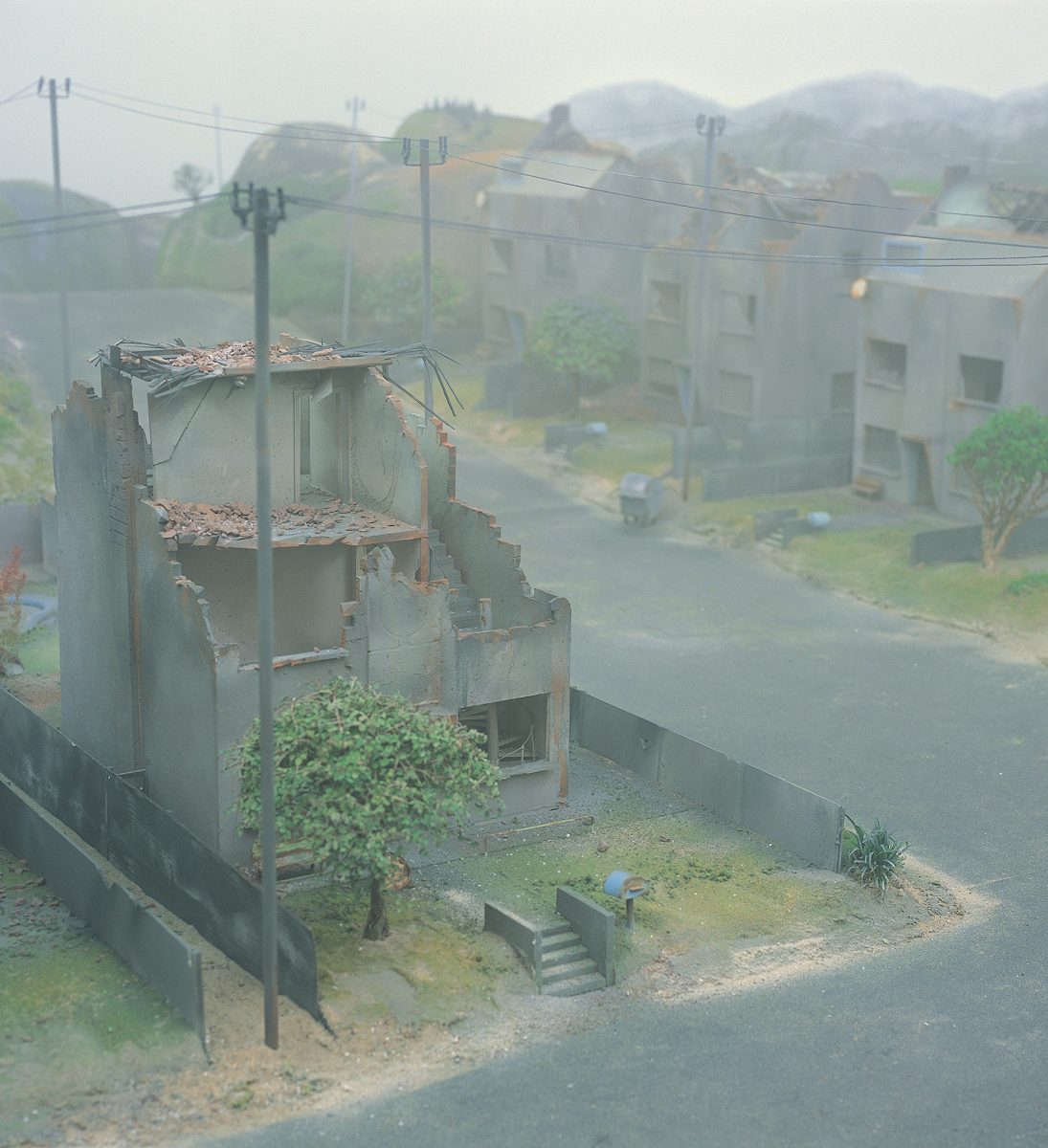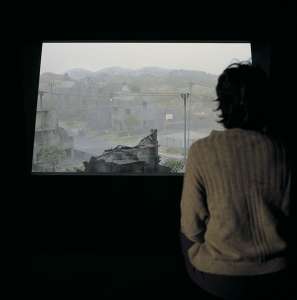Location (4) Sculptural Installation, 2001. 1000 × 1200 × 500 cm.
Images
The visitor enters a silent, darkened space equipped with only a broad, low bench. The bench is situated in front of a wide, panoramic window (the only one in the space) looking out on an abandoned and partially demolished neighbourhood consisting of tract housing, with uniform family dwellings. The neighbourhood is completely deserted; the damaged houses, the playground and the playing field are vacant. The only activity to be seen is the little fountain in the heart of the housing tract, which continues to spray water with seemingly stubborn optimism. The entire setting is bathed in a diffuse, almost milky-white light; the landscape is ominously silent and empty. The gawkish Fifties residential architecture, which seems to have been constructed with naïve and zealous optimism in the period that immediately preceded the destruction of this seemingly innocent little neighbourhood, gives the scene a touch of irony. Now everything is just standing there, looking sad and bedraggled, in a mist that gradually thickens and then thins out again. It is unclear whether this group of houses has been deserted, or bears the ugly scars of civil war, or simply lay in the path of some natural disaster. As a whole, the dreary image seems awfully familiar to the contemporary viewer, depicting something we may have seen time and again in the media in recent decades.
The view of the neighbourhood was made to scale; a huge scale-model measuring 10 by 12 meters creates the illusion of a real outdoor space. The mist, the muted sources of daylight and the surrounding, curved white walls create the illusion and sense of boundlessness of a real exterior landscape.







